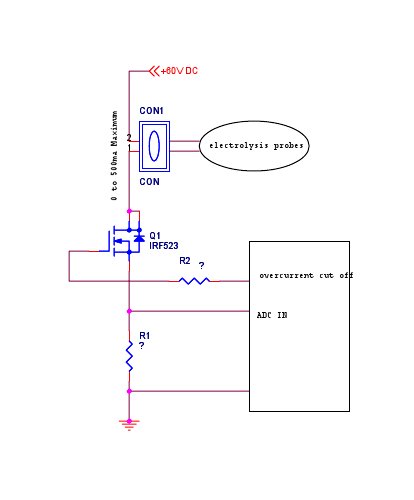UroBoros
Advanced Member level 2
- Joined
- May 5, 2004
- Messages
- 642
- Helped
- 19
- Reputation
- 38
- Reaction score
- 8
- Trophy points
- 1,298
- Location
- Cochin - India
- Activity points
- 6,463
electrolysis mosfet
Hello
I need to measure the current in a electrolysis process. Maximum current is 500ma. I need to monitor the current continuously for over current etc. I need 9 channels.
I am not having very good idea on how to do the hardware part .PIC software I can manage.
This is the image i propose to get an idea of my requirement

If my required range is 0to 500ma can somebody help me with good hardware design suggestions. I need to measure 9 channels like this .But I think i can do it by analogue multiplexer chips. Also suggest a chip for my purpose.
Please suggest a a suitable series resistor to make PIC calculation simple. I need only a resolution of 1mA.
Thanks
Hello
I need to measure the current in a electrolysis process. Maximum current is 500ma. I need to monitor the current continuously for over current etc. I need 9 channels.
I am not having very good idea on how to do the hardware part .PIC software I can manage.
This is the image i propose to get an idea of my requirement

If my required range is 0to 500ma can somebody help me with good hardware design suggestions. I need to measure 9 channels like this .But I think i can do it by analogue multiplexer chips. Also suggest a chip for my purpose.
Please suggest a a suitable series resistor to make PIC calculation simple. I need only a resolution of 1mA.
Thanks
